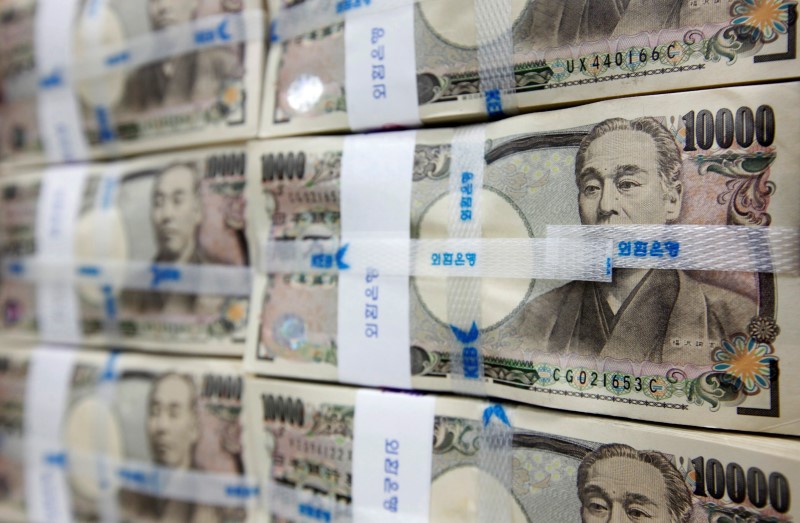Investing.com - The yen weakened in Asia on Thursday despite surprise gains in GDP growth for the second quarter as current account figures missed expected levels and investors looked ahead to trade figures from China.
Japan reported the adjusted current account with a surplus of ¥1.45 trillion, below the ¥1.59 trillion surplus seen and an un-adjusted current account surplus of ¥1.938 trillion, also below an expected ¥2.09 trillion surplus. Also in Japan, bank lending for August rose 2.0% year-on-year as expected.
At the same time second quarter GDP showed a surprise 0.2% gain, from a flat level expected quarter-on-quarter and rose at a 0.7% pace year-on-year, well above the 0.2% gain seen. Real second quarter GDP was revised up from a preliminary estimate of 0.048% on quarter, confirming the economy has fluctuated sharply, contracting twice last year. Modest growth is expected to continue but consumer spending is sluggish amid slow wage growth while exports remain weak due to the global slowdown.
USD/JPY changed hands at 101.83, up 0.09% after the current account and GDP data, while AUD/USD traded at 0.7668, down 0.07%.
Later Australia releases trade data with a deficit of A$2.75 billion seen for July. The figures are followed with China expected to report a trade balance surplus of $58.00 billion for August with exports seen down 4.0% year-on-year and imports decline 4.9%.
The U.S. dollar index, which measures the greenback’s strength against a trade-weighted basket of six major currencies, was last quoted at 94.95.
Ahead, the European Central Bank will outline views on further stimulus at the bank's policy meeting on Thursday as growth and inflation remain weak despite efforts to date.
Overnight, the dollar remained moderately higher against the other major currencies on Wednesday, but gains were still limited as the previous session’s downbeat U.S. data lowered expectations for a rate hike by the Federal Reserve this year.
Sentiment on the greenback remained vulnerable after the Institute of Supply Management said on Tuesday that its non-manufacturing purchasing manager's index fell to 51.4 last month from 55.5 in July. Analysts had expected the index to drop to 55.0.
The data came after downbeat U.S. employment data published last Friday crushed expectations for an upcoming rate hike by the Fed.
